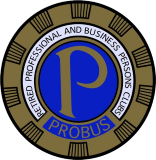The Ladies Club were treated to an interesting talk by Steven Hoadley today, about the early years of the liner Queen Mary.
Cunard had been discussing the need for a larger transatlantic passenger ship from 1930 onwards.
Britain was in the throes of a major depression however, which was affecting all Clyde shipyards. Sir Percy Bates, project manager for the new liner, was on the point of telling the workers that ship building was being abandoned.
Someone suggested asking the government for a loan to keep the yards working which coincided with the White Star shipping line making a similar request. A government loan of £3.5 million was granted, provided the two shipping companies merged to produce the new liner.
The entire building and fitting out was completed on the Clyde, including, bars, kitchens, lounges, dining rooms and all the cabins. Art Deco artwork was featured around the ship, and in places a softer prettier style was adopted to placate the American view of British style. Even the beds had to be completely made with sheets & blankets, before the liner arrived in Southampton ready for her maiden voyage.
Meanwhile the name of the ship was being wdiscussed and it was thought it would follow the ‘ia’ ending tradition to follow the tradition as in Mauritania.
Around this time golf was a major pastime of King George V. During a game with a government minister, the King asked: “What name is being given to the new ship?” The minister replied “She will be named after Britain’s most famous Queen”. The king instantly replied: “My wife Mary will be delighted“.
The Queen launched the new liner on 24th September 1934 and the large crowd waited for it to glide down the slip into Clyde. The launch was unsuccessful at first but after a delay was accomplished.
After going aground twice in the Clyde and a further stop to have the lifeboats fitted, the Queen then rocketed down to Southampton in four days. Once there she was berthed in a newly built dry dock ready for supplies to be put on board.
50,000 eggs sounds excessive as do 25,000 packets of cigarettes. There was even a Kosher kitchen catering for the Jewish community, members of which were fleeing from the growing threat of WW2 in Europe.
The whole ship was opulent and palatial. There were two swimming pools and the first class lounge transformed into a cinema.
There were three classes of people on board and the British shipping lines had a reputation for treating third class passengers well. Many notable people were on board for the maiden voyage, perhaps the most famous being a very young JFK, at the time a student in Britain.
At the end of the maiden voyage the Captain, Sir Edgar Britten, wrote in the Ship’s log:
Distance - 3158 NM’s. Time - 4 days 12 hours & 24 minutes. Average speed 29.13 knots. 2000 passengers & 1000 crew
The age of rapid passenger transatlantic crossings had begun
